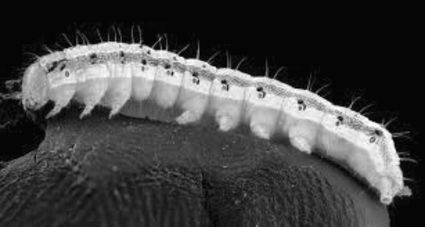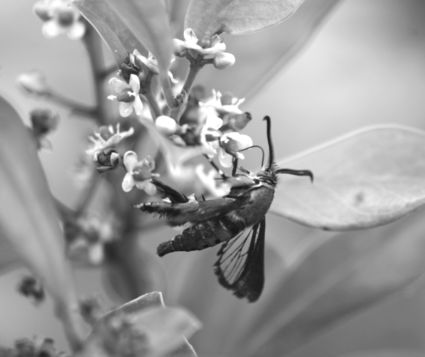Vegetable Insect Pests
Grow a row grow a community
August 13, 2020
Dealing with insect pests is a frustrating aspect of vegetable gardening. With some insects, by the time the damage is noticed it may be too late to do much but share produce with the little critters.
Examples of such insects are corn earworm, tomato fruit worm and squash vine borer. Once these insects are inside the fruit or plant, it is too late to use control methods like insecticides.
Corn earworm adults are buff colored moths that lays eggs on corn silks at night. After hatching, larvae crawl down the silks into the corn ear. While several eggs are laid, there is only one earworm per ear because they are cannibalistic.
To control corn earworm, timing is important. If insecticides are used, they need to be applied every few days to fresh silks. Once ears start silking, begin application. Moths prefer to lay eggs on fresh silks so once they turn brown and dry out, stop using insecticides.
Most home gardeners choose to share some of their sweet corn with earworms rather than using insecticides which is fine to do. Those who want to try to control, should use insecticides labeled for use on vegetables with sweet corn and corn earworm listed on the label.
Bacillus thuringiensis is an organic pesticide that can be effective against young larvae. A time consuming but organic control is applying mineral or horticultural oil to the inside of silks with a medicine dropper five to seven days after they begin to silk to suffocate earworms. If oil is applied to fresh silks, this can interfere with pollination.
The favorite vegetable of corn earworm is corn; however, they sometimes infest tomatoes. When they do, we call them tomato fruit worms. On tomatoes, the moth lays her eggs on the backside of fruit or the portion facing towards the plant.
After hatching, larvae bore into the tomato and feed inside. They introduce bacteria and fungi that can make the fruit rot. Again, once inside the fruit there is nothing that can be done. Tomato fruit worms are fairly rare so this is one insect most gardeners choose to share a few fruits with.
Squash vine borer adults are clear winged, red and gray moths that resemble wasps. Unlike most moths, they fly during the day, laying eggs near the base of squash, zucchini, pumpkin, and gourd plants. Larvae bore into the base of plants to feed.
They overwinter in cocoons in soil or leaf litter and emerge in late June and early July to mate and begin egg laying. The bright yellow flowers attract them to plants. Larvae feed for a month or month and a half, then leave the plant to pupate in soil. There is only one generation per year.
The first signs of squash vine borer damage is dying leaves with the base of plants having yellowish sawdust-like frass. At this point, it is too late to apply insecticides. These need to be applied to the base of plants starting in late June and continuing through about mid-July.
Apply sprays or powders to the base of stems about every three to five days over a four to five week period. Neem and spinosad are considered low risk products. Permethrin and bifenthrin are also labeled for use.
Some gardeners vertically slit the stem open to remove the borer and cover the base of the stem with soil to encourage new roots to grow above the damage. Also remove and discard infested plants before larvae emerge to pupate in soil and use crop rotation to reduce the level of damage.
Interested in donating produce to the Antelope County Food Pantry as part of the Grow-A-Row Campaign? Contact Brittany Spieker with the Antelope County Extension Office to schedule a drop-off time by calling 402-887-5414 or emailing [email protected].
For those in need of food, the Antelope County Food Pantry is open on the first and third Thursdays of the month from 11:30 a.m. to 1:30 p.m., at the Lions Club in Neligh.






Reader Comments(0)